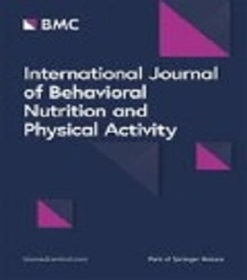闲暇和职业体育活动与心血管疾病发病风险:前瞻性队列研究的系统回顾和剂量反应荟萃分析
IF 5.6
1区 医学
Q1 NUTRITION & DIETETICS
International Journal of Behavioral Nutrition and Physical Activity
Pub Date : 2024-04-24
DOI:10.1186/s12966-024-01593-8
引用次数: 0
摘要
体育锻炼对心血管系统有好处,但是,什么水平和类型的体育锻炼能使心血管健康达到最佳状态还不清楚。我们旨在确定对心血管疾病(CVD)最有益的体育锻炼水平。我们在 PubMed、Scopus 和 Web of Science 上检索了以闲暇时间(LTPA)或职业体力活动(OPA)为接触点,以主要类型的心血管疾病(总心血管疾病、冠心病 [CHD]、中风和心房颤动 [AF])发病率为结果的前瞻性队列研究。采用 ROBINS-I 工具对研究的偏倚风险进行评估。采用随机效应配对模型计算总危险比(HR)。共有 103 项研究被纳入分析。最高与最低LTPA与较低的总体心血管疾病(HR = 0.81; 95% CI: 0.77-0.86)、冠心病(HR = 0.83; 0.79-0.88)和中风(HR = 0.83; 0.79-0.88)风险相关,但与房颤(HR = 0.98; 0.92-1.05)无关。线性剂量反应分析表明,LTPA 每增加 20 MET 小时/周,心血管疾病、冠心病、中风和房颤发病风险分别降低 10%、12%、9% 和 8%。在非线性剂量-反应分析中,当LTPA水平达到20 MET-小时/周时,心血管疾病和冠心病风险分别降低19%和20%,当LTPA水平达到25 MET-小时/周时,中风风险降低22%。就房颤而言,存在一种 U 型非线性关联,LTPA 为 10 MET-小时/周时,风险最多可降低 8%。较高水平的 OPA 与心血管疾病、冠心病、中风或房颤风险无关。总体而言,结果显示LTPA与心血管疾病、冠心病、中风和房颤风险之间存在反向剂量反应关系。跑步是最有益的LTPA,但各种LTPA强度的风险相似。OPA对总心血管疾病或任何类型的心血管疾病均无益处。本文章由计算机程序翻译,如有差异,请以英文原文为准。
Leisure-time and occupational physical activity and risk of cardiovascular disease incidence: a systematic-review and dose-response meta-analysis of prospective cohort studies
Physical activity has benefits for the cardiovascular system, however, what levels and types of activity provide optimal cardiovascular health is unclear. We aimed to determine the level of physical activity that has the most benefits against cardiovascular diseases (CVD). PubMed, Scopus, and Web of Science were searched for prospective cohort studies on leisure-time (LTPA) or occupational physical activity (OPA) as the exposure and major types of CVD (total CVD, coronary heart disease [CHD], stroke, and atrial fibrillation [AF]) incidence as the outcome. Risk of bias of studies was evaluated using the ROBINS-I tool. Summary hazard ratios (HR) were calculated using random-effects pairwise model. A total of 103 studies were included in the analysis. The highest versus the lowest LTPA was associated with a lower risk of overall CVD (HR = 0.81; 95% CI: 0.77–0.86), CHD (HR = 0.83; 0.79–0.88), and stroke (HR = 0.83; 0.79–0.88), but not AF (HR = 0.98; 0.92–1.05). Linear dose-response analyses showed a 10%, 12%, 9%, and 8% risk reduction in CVD, CHD, stroke, and AF incidence, respectively, for every 20 MET-hours/week increase in LTPA. In nonlinear dose-response analyses, there were inverse associations up to 20 MET-hours/week with 19% and 20% reduction in CVD and CHD risk, and up to 25 MET-hours/week with 22% reduction in stroke, with no further risk reduction at higher LTPA levels. For AF, there was a U-shaped nonlinear association with the maximum 8% risk reduction at 10 MET-hours/week of LTPA. Higher levels of OPA were not associated with risk of CVD, CHD, stroke, or AF. Overall, results showed an inverse dose-response relationship between LTPA and risk of CVD, CHD, stroke, and AF. Running was the most beneficial LTPA but the risk was similar among various LTPA intensities. OPA showed no benefits in total or any type of CVD.
求助全文
通过发布文献求助,成功后即可免费获取论文全文。
去求助
来源期刊
CiteScore
13.80
自引率
3.40%
发文量
138
审稿时长
4-8 weeks
期刊介绍:
International Journal of Behavioral Nutrition and Physical Activity (IJBNPA) is an open access, peer-reviewed journal offering high quality articles, rapid publication and wide diffusion in the public domain.
IJBNPA is devoted to furthering the understanding of the behavioral aspects of diet and physical activity and is unique in its inclusion of multiple levels of analysis, including populations, groups and individuals and its inclusion of epidemiology, and behavioral, theoretical and measurement research areas.

 求助内容:
求助内容: 应助结果提醒方式:
应助结果提醒方式:


